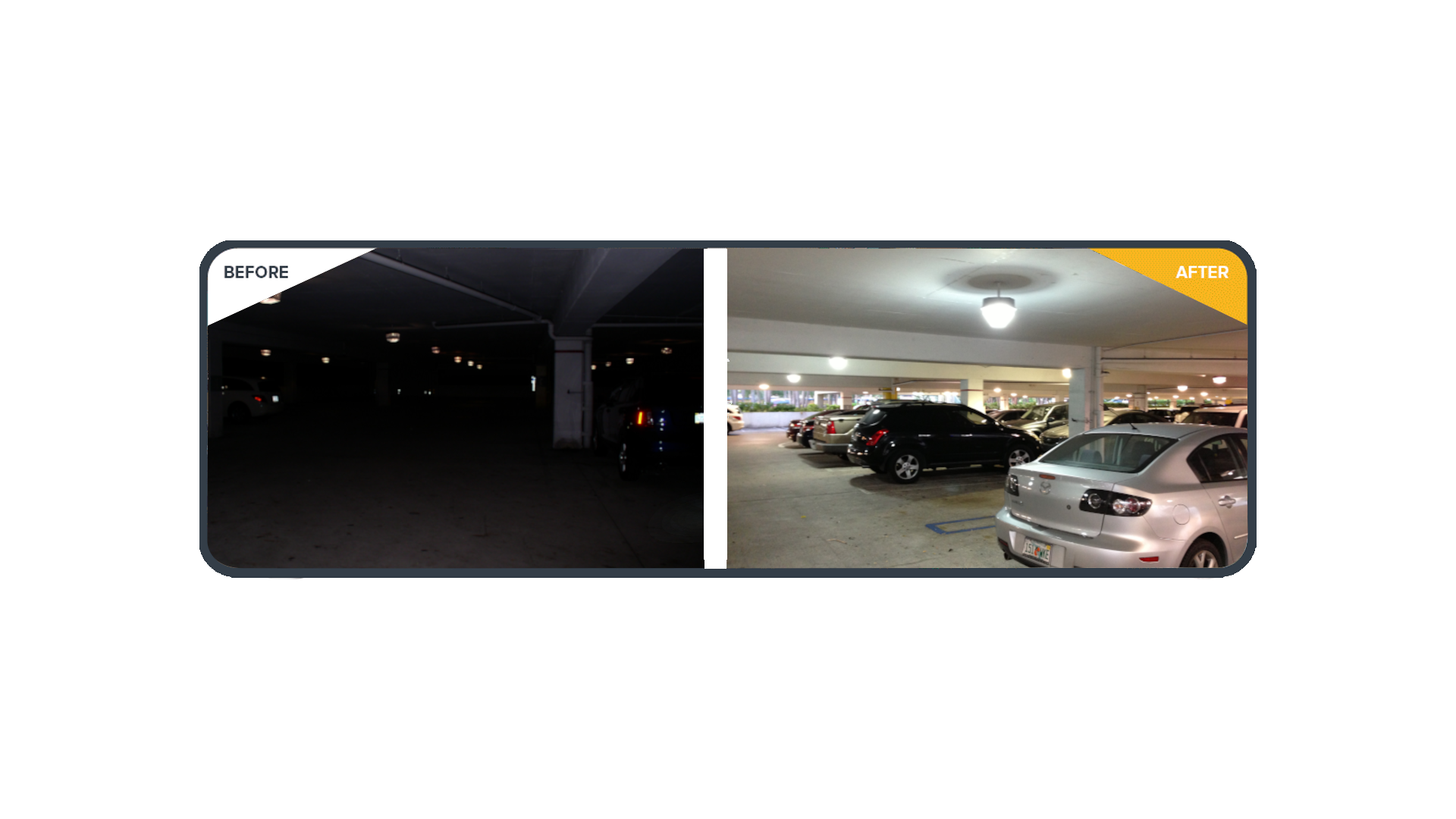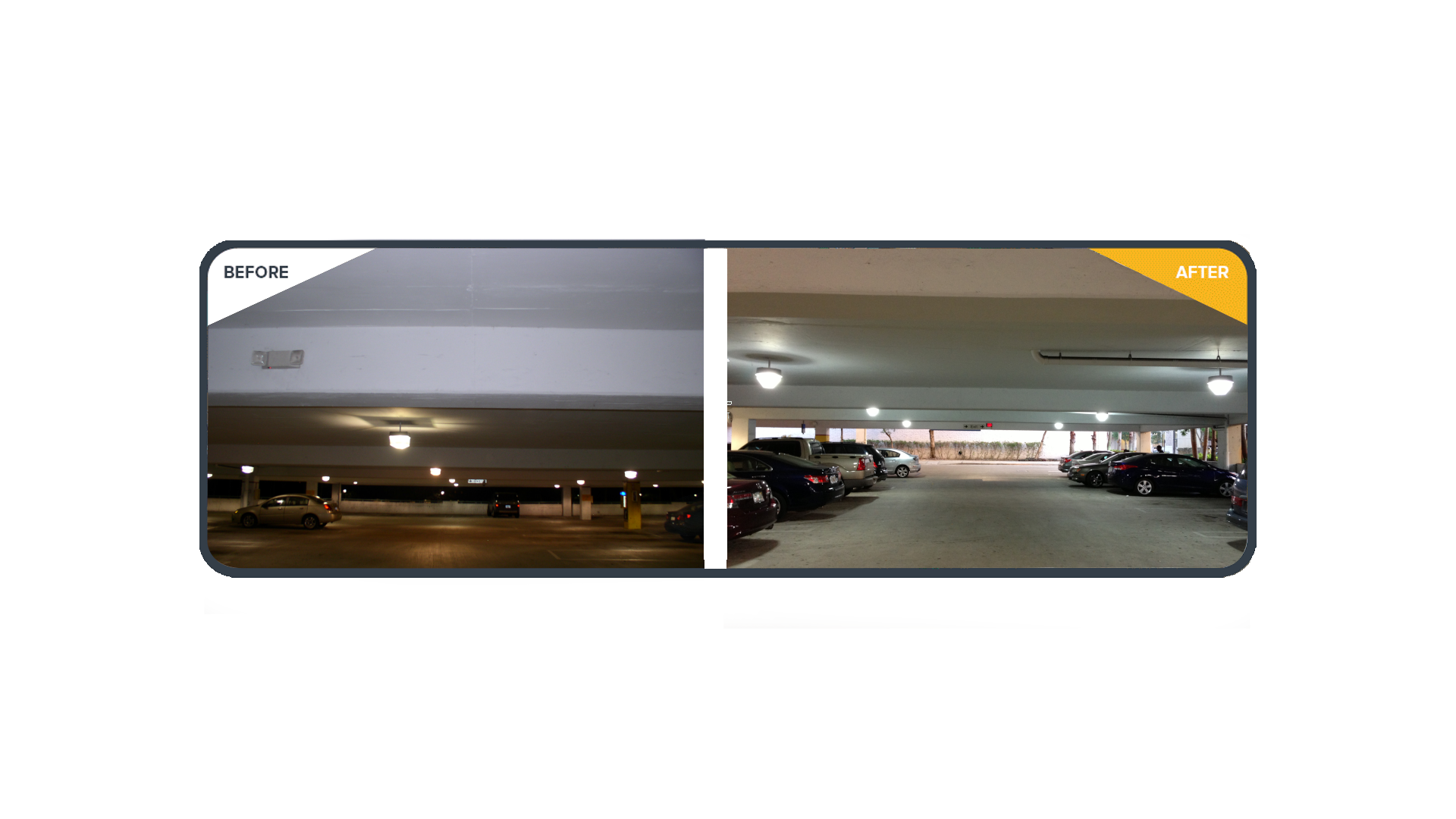Municipal LED Lighting: Municipal Street Lights & Government Lighting
Insufficient lighting can create uncertainty and compromise the ambiance and safety of municipal streets and government areas. What's worse is that outdated fluorescent municipal lighting systems deplete resources, jeopardize public safety, and detract from the visual appeal of these spaces.
Enter, FES Lighting.
We offer advanced solutions specifically tailored for municipal solar street lights and government buildings, ensuring optimal efficiency while meeting compliance and safety standards.
Experience the perfect blend of functionality and aesthetics with our cutting-edge lighting solutions.
Maximize savings through the implementation of municipal LED lighting
Enhance the lighting in your municipality and maximize savings with state-of-the-art LED technology. Many city street lamps and government building light fixtures still rely on outdated area lighting systems that consume excessive energy, up to three times more than LEDs, and have a lifespan ten times shorter.
Let's consider the average government building:


In addition to these numbers, it's important to factor in maintenance expenses, including the rental of specialized equipment for high bay LED lights.
Just imagine the potential reduction in costs while still enjoying significant savings!
Significant potential savings from LED municipal street lights
Since the inception of our Lighting-as-a-Service, FES has established fruitful collaborations with municipal street lights, park lights, roadways, parking lots and government lighting owners and managers. Our expertise as a street light supplier and in installing LED street light fixtures has resulted in substantial savings, making a positive impact on their budgets.
Here is a glimpse of the typical savings experienced by government entities that convert and partner with us for their lighting projects:
51,748 kWh yearly energy savings
$1,604 yearly maintenance savings
$6,507 yearly energy cost savings
$8,111 total yearly savings
$121,658 total savings by partnering with FES
LED municipal street lighting offers benefits that go beyond financial gains
LED lighting offers numerous benefits, extending beyond financial advantages:
- Enhanced energy-efficient lighting, resulting in improved visibility for indoor and outdoor areas
- Increased safety and security for both staff and the public
- Creation of safer workspaces, promoting overall well-being
- Reduced kilowatt consumption of modern LED to save energy
- Enhanced workplace productivity and visual comfort, facilitating efficient operations
How much does it cost to upgrade street and government lighting to LED?
Revolutionary pricing model for government lighting solutions
Our mission is to streamline the process of upgrading municipal street lighting. Picture an all-in-one lighting supplier and LaaS company (Lighting-as-a-Service) that charge no upfront cost, providing efficient lighting solutions for municipal streets and government buildings.
As a leading commercial lighting company in the LED lighting applications, we take ownership of both the products and the entire process. This guarantees a smooth transition during retrofit and fosters long-lasting relationships with our municipal and government partners across hundreds of cities and towns all over the U.S.
Upgrade to LED municipality lighting: simple and efficient lighting solutions
- We deliver the lights for your LED retrofit directly to you, taking care of hiring and compensating a local contractor to install them, all at no cost to you!
- What's more, we cover the contractor's fees for 15 years, ensuring optimal lighting conditions and handling any necessary repairs for your lighting and smart city lighting solutions.
- In addition, we distribute the benefits from the overall energy savings for your facility.
- You receive an impressive 25% of the energy savings, while we retain the remaining 75%.
FAQs
Who is responsible for covering government & municipal street lighting costs?
The responsibilities can vary depending on the agreement terms. In some cases, the costs may be covered by the municipality or government entity, while the maintenance and operation of energy efficient municipal LED street lights could be outsourced to a third party like FES. We work closely with you to find the best arrangements that suit your lighting needs.
What happens if there is a need to relocate or transfer the lighting?
Unlike most other lighting-as-a-service firms, we provide comprehensive support throughout the entire process. Whether you need to relocate the streetlights or transfer the contract to another entity, such as a new municipality or government tenant, we are here to assist you every step of the way.
How can I determine if we qualify for a lighting upgrade from your street lighting company?
The qualification criteria typically include operating the lighting for a minimum number of hours annually, utilizing outdated traditional lighting systems, and having the need for energy savings. Our team conducts an on-site energy audit and reviews your historical energy bills to assess eligibility. We then develop a personalized installation plan using energy-efficient LED lights that meet the safety and efficiency requirements for government and municipality lighting.
Typically, municipal street lights and government lighting systems operate for over 260 days a year, with each day lasting more than 8 hours. However, many of these systems still rely on outdated traditional lighting technology.


Ready for an upgrade? Let's connect...
Are you ready to discover the path to becoming an authorized partner for our cutting-edge municipal street lights and government lighting solutions? Let us assist you in harnessing the full potential of an energy-efficient lighting system for your municipality, all while reaping substantial savings. We are ecstatic to introduce you to the captivating world of LED illumination!

